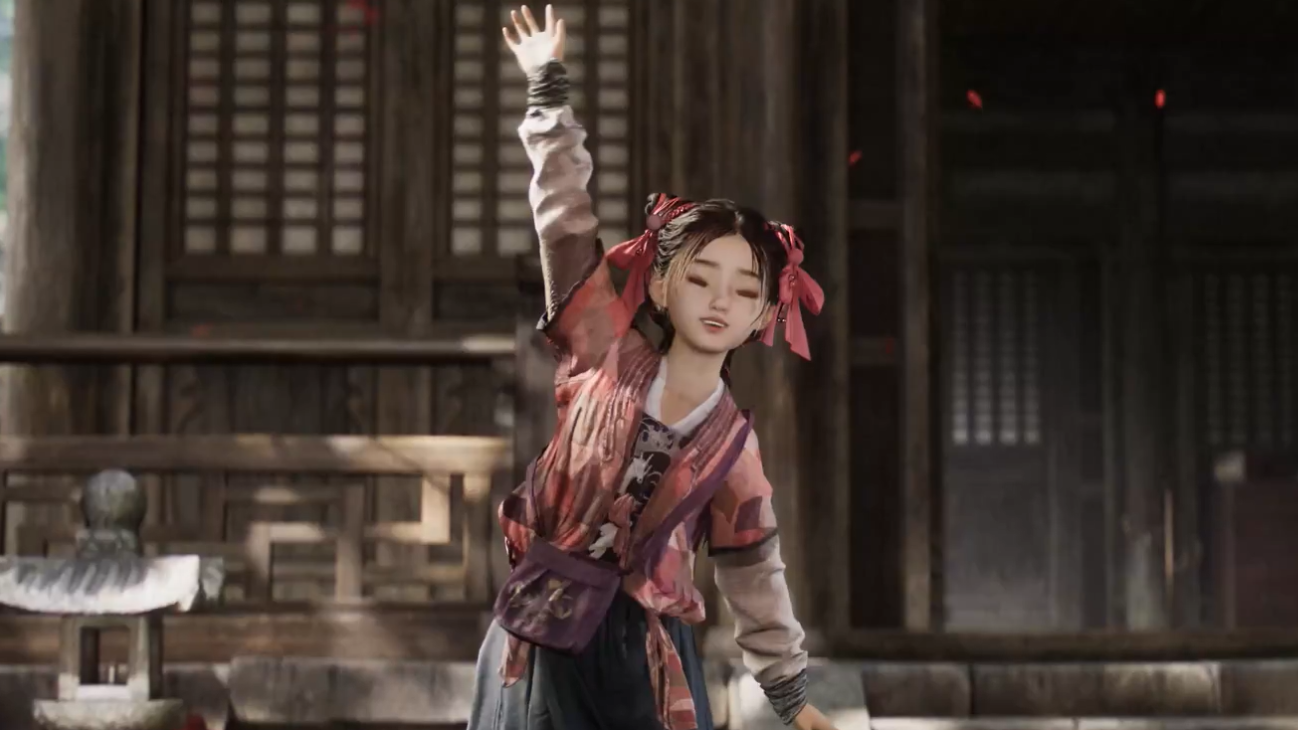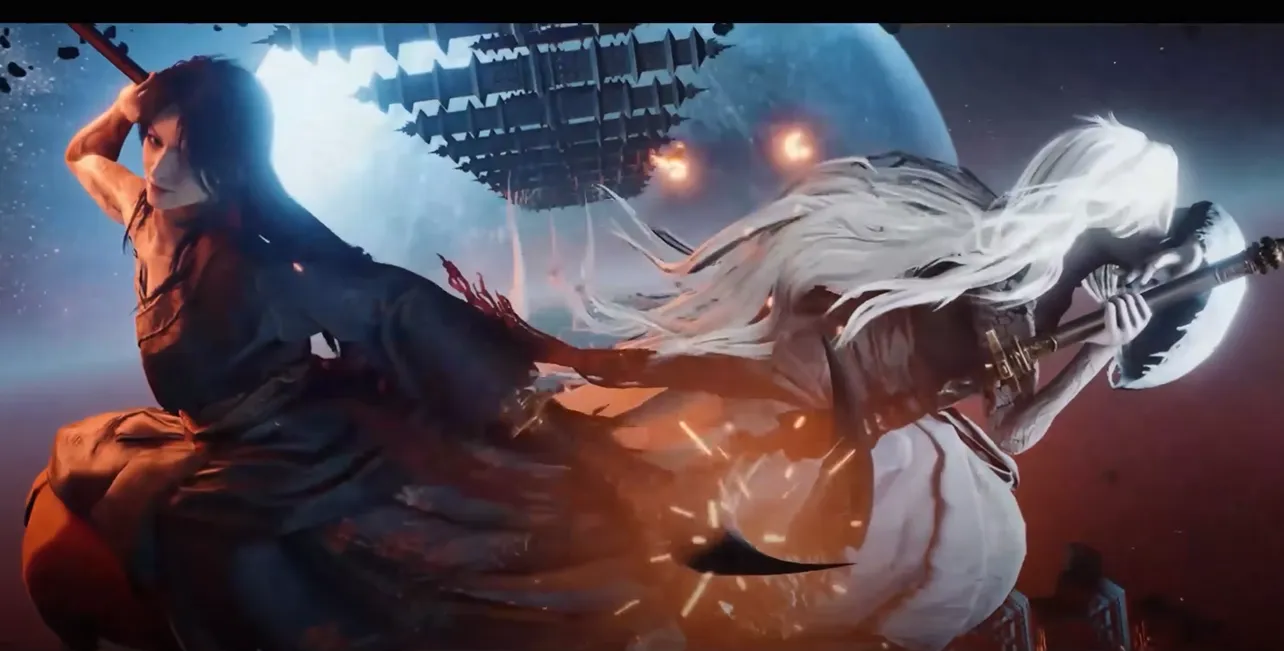Where Winds Meet looks like a traditional premium open-world RPG, but it is built as a free-to-play live service. That raises the obvious question: what actually keeps the lights on?
The short answer: cosmetics, a cosmetic-only gacha, and a web of in‑game currencies that sometimes blur the line between “time saver” and “power advantage,” especially in PvP and endgame grind.
Monetization pillars in Where Winds Meet
The game’s business model is built on a few core elements:
| Monetization element | Spends real money? | What you actually get | Impact on gameplay power |
|---|---|---|---|
| Pearls (premium currency) | Yes | Shop cosmetics, mounts, emotes, cosmetic gacha pulls | None; does not buy gear or stats |
| Cosmetic gacha banners | Indirectly (via Pearls) and via earnable currencies | Outfits, visual skill effects, dyes, consumables | Buff consumables can be crafted; main impact is visual |
| Battle Pass | Optional Premium track | Skins, premium currency, stamina items, blue‑green jades | Extra stamina and jades accelerate progression |
| Activity / shop currencies | No (earned in‑game) | More cosmetics, housing items, some passive skills and items | Time investment can unlock passive power without spending |
| Treasure Money / Ghost Market | No | Alternative way to buy some premium shop items | Lets non‑spenders access parts of the cash shop |
The design goal is clear: make fashion the primary sink for cash, keep direct power off the credit card, but still give paying players smoother progression routes.
Pearls: the real-money fuel
Pearls sit at the center of monetization. They are bought with real money and are not earned through normal play. On PlayStation and PC, they are sold in tiered packs, with first‑time purchase bonuses that also grant blue‑green jades.
Pearls are used for:
- Buying outfits, haircuts, accessories, mounts, and emotes directly from the shop
- Buying cosmetic skill effect variants (large dragon slashes, elaborate elemental flourishes, and similar visual swaps)
- Purchasing cosmetic gacha pulls (converted into specific pull currencies in the shop)
They cannot be spent on weapons, armor, or raw stats. That keeps them squarely in the “pay to look good” lane. On console and Steam, players have already called out that some cosmetics are priced closer to a full indie game than a “micro” transaction, with individual costume sets and even premium hairstyles reaching the $30–$40 range once currency exchange is done.
Gacha in Where Winds Meet (and what it sells)
The game does include gacha, but it is tightly scoped to aesthetics and minor utility items.
| Gacha element | What the banner sells | Key mechanics |
|---|---|---|
| Standard banner | Cosmetic outfits, skill effects, dyes, consumables | Uses Resonating Melodies; guaranteed Epic every 10 pulls; pity at 150 pulls |
| Limited‑time banners | Time‑limited “flashy” cosmetics | Uses Lingering Melodies; also only cosmetics and consumables |
| Pull currencies | Lingering Melodies (limited) and Resonant Melodies (standard) | Bought with Echo Jade in the Jianghu Treasures shop, or via Pearls |
The important constraints:
- The banners do not drop weapons, armor, or discrete stat‑boosting gear.
- Consumables from gacha (food, medicines, buffs) are also craftable from in‑world materials.
- The same cosmetics are often obtainable either direct‑buy with Pearls or via gacha.
So while it is a gacha game in structure, the high‑value rewards here are fashion and spectacle, not power.
Echo Jade, Jade Fish, and the standard banner loop
Underneath Pearls and Melodies sits another layer of currency that matters for both monetization and progression: Echo Jade and Jade Fish.
| Currency | How you earn it | Primary uses |
|---|---|---|
| Echo Jade | Quests, exploration, chests, enemies, codes, guild and Arena activities | Buy gacha tickets (Melodies), cosmetics, passive skills, and items in the Activity Shop |
| Jade Fish | Similar sources to Echo Jade with higher weekly cap | Also spent in the Activity Shop on cosmetics, passives, and items |
Echo Jade is where the cosmetic gacha intersects with normal play:
- Resonant Melodies (standard pulls) cost 160 Echo Jade each.
- Lingering Melodies (limited pulls) cost 200 Echo Jade each, with a cap on how many can be bought per banner cycle.
- Echo Jade can also unlock passive skills and utility items from merchants and the Activity Shop.
Because Echo Jade is earnable, free players can participate in the gacha, though at a slower pace than those supplementing it with Pearls. That slows down glamour collection but doesn’t wall it off entirely.
All the other currencies — and what they’re really for
The economy is deliberately fragmented. Inside the Money Bag, players track a dozen currencies, each locked to specific activities or shops.
| Currency | Weekly cap | Main shop or system | What you actually buy |
|---|---|---|---|
| Five Dynasties Coins (Zhou / Song) | 175,500 | Regular vendors | Consumables, basic items; core “gold” of the game |
| Commerce Coins | None | Street vendors, wagers | Mini‑game bets, temporary purchases |
| Fourfold Coins | 1,500 | Bounty Shop | Cosmetics and housing items |
| Four Seas Letters | 1,000 | Four Seas Shop | Co‑op bounty and co‑op activity cosmetics, housing items |
| Harmony Coins | 2,000 | Brotherhood Shop | Multiplayer‑linked cosmetics, housing items |
| Hundred Trades Treasure Coins | 2,500 | Hundred Trades Shop | Career path cosmetics, housing items |
| Jianghu Reputation | 1,200 | Sect Shop | Reputation cosmetics and housing items |
| Battle Pass Coins | No direct cap (XP capped) | Battle Pass Shop | Battle pass‑linked cosmetics and items |
| Pearls | None | Premium Shop | Premium cosmetics and items |
| Treasure Money | None | Ghost Market | Some “premium” shop items without paying Pearls |
Almost everything in this web ultimately points to one thing: clothing, housing decorations, and identity items. Even currencies tied to co‑op, bounties, and careers are largely “fashion rewards” for that slice of play, not stat sticks.
Treasure Money is the most important exception. Earned by questing and crafting items like food and medicine, it becomes usable in the Ghost Market to purchase some premium‑shop goods without Pearls. That system quietly ensures that patient, non‑spending players can still tap into parts of the cash shop if they treat crafting as a side‑hustle.
Where progression starts to lean toward pay-to-accelerate
On paper, everything purchasable is cosmetic or craftable. In practice, a few systems nudge paying players ahead of free players during key windows.
Blue‑green jades and skill books
Beyond their role in the standard cosmetic banner, blue‑green jades can be taken to specific merchants on the world map and traded for skill books. Those books:
- Unlock new combat skills
- Upgrade existing skills toward max level
Free players take jades from events, compensation mails, and occasional rewards. Paying players get additional jades as bonuses when buying Pearls and from certain passes. Because vendors sell each skill book only once, the advantage is front‑loaded: paying players can complete skill collections and upgrades earlier in a region’s lifecycle, especially important in PvP and fresh content windows.
After those books are bought out, jades return to being mostly cosmetic currency. That means the power gap narrows over time, but early adopters who spend money enjoy a head start.
Stamina, battle pass pills, and endgame farming
Where the design edges closest to pay‑to‑win is stamina.
- All major gear‑farming dungeons consume stamina per run (60 for full‑reward runs, 20 for lower‑reward versions).
- Account stamina caps at 600 and refills slowly over roughly two days.
- Battle pass “pills” instantly restore 60 stamina each.
The Battle Pass has a free track and a paid track. Most rewards are mirrored or similar between the two, but the premium side grants four extra stamina pills per cycle on top of the two available to everyone. Those additional refills translate into more dungeon runs, more shots at high‑roll Diablo‑style weapons, and more upgrade materials.
Layer on a weekly level cap, and a pattern emerges:
- When the cap rises, players rush to level up and re‑gear.
- Spend-heavy players walk in with extra stamina and more fully upgraded skills.
- For the first days of a reset, those players hold a noticeable advantage in PvP and competitive group content.
- Over the rest of the week, free players slowly catch up as natural regen and non‑stamina grinding fills in the gap.
This is not the hard wall of a classic pay‑to‑win MMO where gear is directly bought. It is, however, a sanctioned head start that repeats with each progression bump.
Player reactions: whales, fashion, and sticker shock
The community is split more on pricing than on the overall structure.
On one side, players comfortable with free‑to‑play live service economics see the model as straightforward: no subscription, no locked story content, cosmetics as the primary sink, and systems that let patient players grind cosmetics and some shop items without spending. For this group, dropping $10–$30 a month on skins or passes feels comparable to a sub fee, especially when they are invested in the combat and exploration.
On the other hand, players used to either single‑purchase RPGs or cheaper cosmetic systems in other free‑to‑play games call out three pain points:
- Individual cosmetics priced near or above full indie games
- Randomized gacha pulls for outfits, with no low‑cost “monthly card” that feeds the main pull currency
- Regional price discrepancies, with some reporting that skins in the global version cost around ten times the Chinese server prices
That tension is familiar across modern free‑to‑play games: a broad base that spends little or nothing, a smaller group funding the game via high‑priced cosmetics, and an ongoing debate over what feels “fair” in a world where cosmetics often cost more than boxed games.

Is Where Winds Meet pay-to-win?
Under a strict definition — “can you buy raw combat power that others can never reasonably obtain?” — the game is not built as pay‑to‑win:
- Pearls do not purchase weapons, armor, or permanent stat gear.
- Gacha banners are cosmetic and utility only, with all buff items craftable.
- Premium cosmetics do not alter skill damage or character stats.
- Some premium shop items can be acquired indirectly through Treasure Money and grind.
Under a broader definition — “can you pay to meaningfully outpace other players in progression and early PvP windows?” — the answer is more complicated. Extra stamina pills and early access to skill books give spenders faster access to optimized builds and high‑end weapons, especially in the first days after level cap increases. Free players can reach the same place without paying, but they do it later and with more grind.
Ultimately, Where Winds Meet is built around a fashion‑first, cosmetics‑led economy with layered soft advantages for paying players. It is not a hard paywall MMO, but it also is not a perfectly level playing field. How that balance feels depends on what you value: fair duels in PvP ladders, a long single‑player story, or the perfect wuxia drip.


